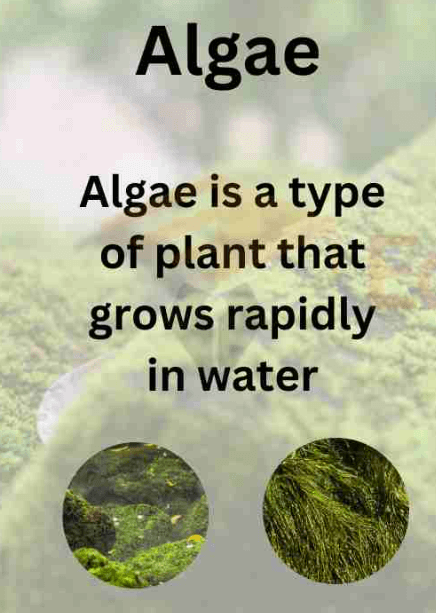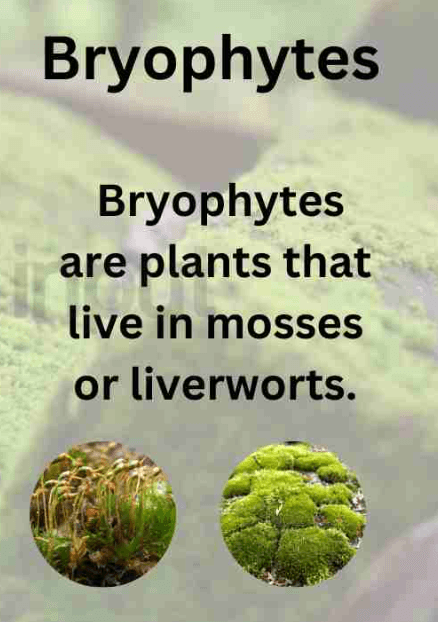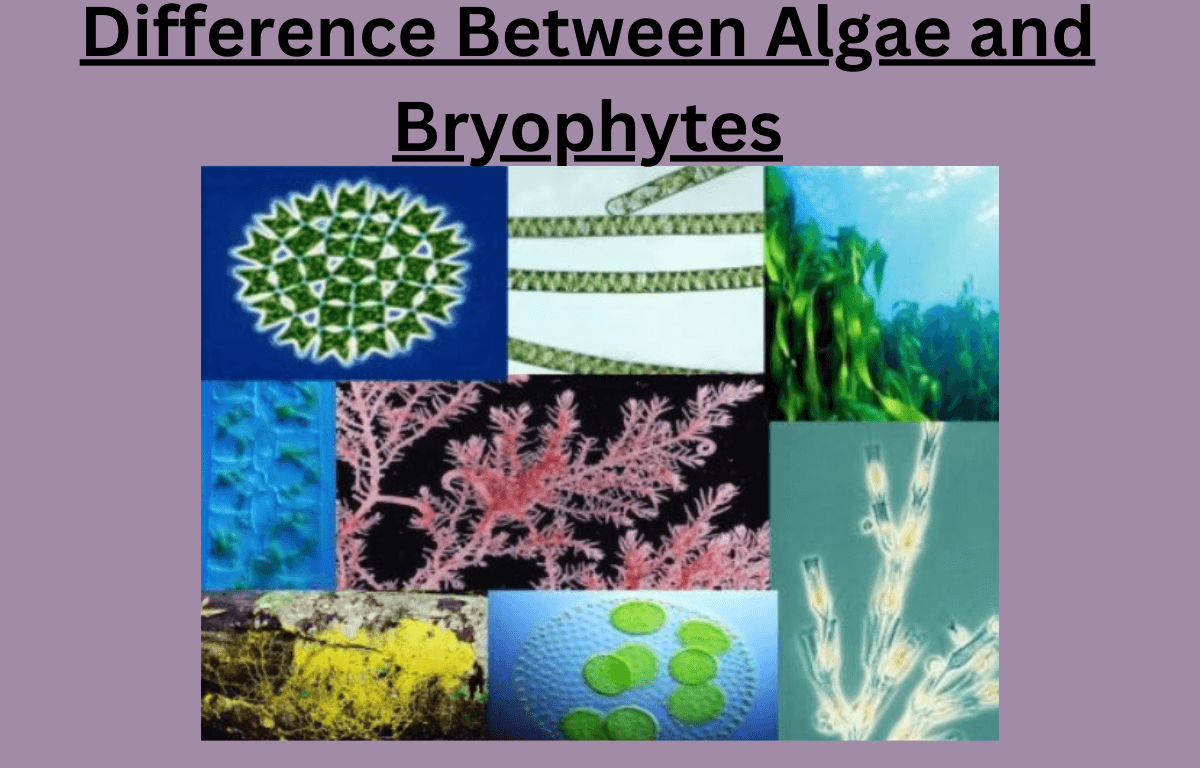Algae can range from single-celled to multicellular forms, including seaweeds. They play a crucial role in aquatic ecosystems as primary producers. On the other hand, bryophytes reproduce via spores and often dense mats in moist environments. While both algae and bryophytes lack true vascular tissues, bryophytes have specialized structures like rhizoids for anchorage and absorption. These distinctions highlight their diverse adaptations to different habitats. Here we have discussed a little more information regarding Algae and Bryophytes.
Algae and Bryophytes
Algae are simple, photosynthetic organisms that can range from single-celled to multicellular forms. They can be found in various environments, including water bodies. Bryophytes, on the other hand, are non-vascular plants, such as mosses and liverworts, which lack true roots, stems, and leaves. Both algae and bryophytes play important roles in ecosystems and contribute to environmental processes.
Define Algae
Algae are simple, plant-like organisms that come in various shapes and sizes. They are found in water, ranging from tiny single-celled forms to large seaweeds. Algae use sunlight to produce energy through Photosynthesis, a process where they convert carbon dioxide and sunlight into sugars. They play a vital role in the ecosystem by producing oxygen and serving as a fundamental food source for various aquatic organisms. Algae are resilient and adaptable, thriving in diverse environments, from freshwater to oceans. Some types of algae are even used by humans for various purposes, such as food, medicine, and industrial applications. Overall, algae contribute significantly to the balance of aquatic ecosystems and have practical applications in our daily lives.

What are Bryophytes?
Bryophytes are simple, non-vascular plants that include mosses, liverworts, and hornworts. Unlike more complex plants, bryophytes lack true roots, stems, and leaves. Instead, they have simple structures that absorb water and nutrients directly from their surroundings. Bryophytes are typically small and thrive in moist environments, such as damp soil, rocks, or tree bark. Since they lack a vascular system, they don’t have specialized tissues for transporting water and nutrients. Despite their simplicity, bryophytes play important roles in ecosystems. They help prevent soil erosion, provide habitat for small small organisms, and contribute to nutrient cycling. Though often overlooked, these modest plants have adapted to various environments, showcasing nature’s diversity and resilience.

Difference Between Algae and Bryophytes
Both algae and bryophytes are simple plant-like organisms, algae are predominantly aquatic and display more diversity in size and structure, while bryophytes are non-vascular plants adapted to terrestrial environments. The primary differences between algae and bryophytes lie in their complexity, habitat, and reproductive strategies.
| Difference Between Algae and Bryophytes | ||
| Characteristic | Algae | Bryophytes |
| Habitat | Algae are predominantly aquatic and found in water bodies ranging from freshwater to marine environments. | Bryophytes are primarily terrestrial, growing in moist environments such as soil, rocks, or tree bark. |
| Vascular Tissues | Algae lack vascular tissues (xylem and phloem) for water and nutrient transport. | Bryophytes are non-vascular plants, lacking true roots, stems, and leaves with specialized transport tissues. |
| Complexity | Algae display diverse structures, from microscopic forms to large seaweeds. | Bryophytes are simple plants with basic structures, including a gametophyte-dominant life cycle. |
| Reproductive Structures | Algae reproduce through various methods, including spore formation and Sexual Reproduction. | Bryophytes reproduce via spores and often have specialized structures like sporangia. |
| Adaptation to Land | Algae are primarily aquatic, though some can tolerate terrestrial environments. | Bryophytes are well-adapted to terrestrial habitats but require moist conditions for Reproduction. |
| Dominant Generation | The life cycle of an algae can involve both dominant gametophyte and sporophyte stages. | Gametophyte is the dominant and independent phase of the life cycle of bryophytes. |
| Water Dependency | Algae often do not rely on water for reproduction, as some can reproduce through air-borne spores. | Bryophytes depend on water for sperm to swim to the egg during Fertilization. |
| Size Range | Algae vary widely in size, from microscopic seaweeds. | Bryophytes are generally smaller in size, with mosses being a common example. |
| Ecological Roles | Algae contribute significantly to oxygen production and form the base of the aquatic Food Chain. | Bryophytes help prevent Soil Erosion, provide habitat for small organisms, and contribute to nutrient cycling. |
| Examples | Examples of Algae include Chlamydomonas, Spirogyra, and Kelp. | Examples of Bryophytes include Mosses (e.g., Polytrichum), Liverworts (e.g., Marchantia), and Hornworts. |
Similarities Between Algae and Bryophytes
While algae and bryophytes have notable differences, they also share some similarities. These similarities exist, it’s important to note that their differences in habitat, complexity, and life cycle also distinguish algae from bryophytes.
- Photosynthesis: Both algae and bryophytes are capable of photosynthesis, utilizing sunlight to convert carbon dioxide into sugars for energy.
- Non-Vascular Characteristics: Neither algae nor bryophytes possess vascular tissues like the Xylem and Phloem for water and nutrient transport.
- Simple Reproductive Structures: Both groups often have relatively simple reproductive structures, with the production of spores being a common feature.
- Environmental Sensitivity: Algae and bryophytes are sensitive to environmental conditions, especially moisture. Bryophytes, in particular, require water for Fertilization.
- Ecological Importance: Both contribute to ecosystem functions – algae by producing oxygen and forming the base of aquatic food chains, and bryophytes by preventing soil erosion and providing habitat.
- Adaptation to Diverse Environments: Some species of both algae and bryophytes are adaptable and can thrive in various environments, showcasing their ecological versatility.
- Absence of True Roots, Stems, and Leaves: Algae and bryophytes lack true roots, stems, and leaves as compared to more complex vascular plants.
- Gametophyte-Dominant Life Cycle: In both groups, the gametophyte phase is a prominent and independent stage in their life cycle.



 50 Vegetables Name for Kids in English a...
50 Vegetables Name for Kids in English a...
 Food Chain: Definition, Types, Examples,...
Food Chain: Definition, Types, Examples,...
 Human Respiratory System: Definition, Di...
Human Respiratory System: Definition, Di...













